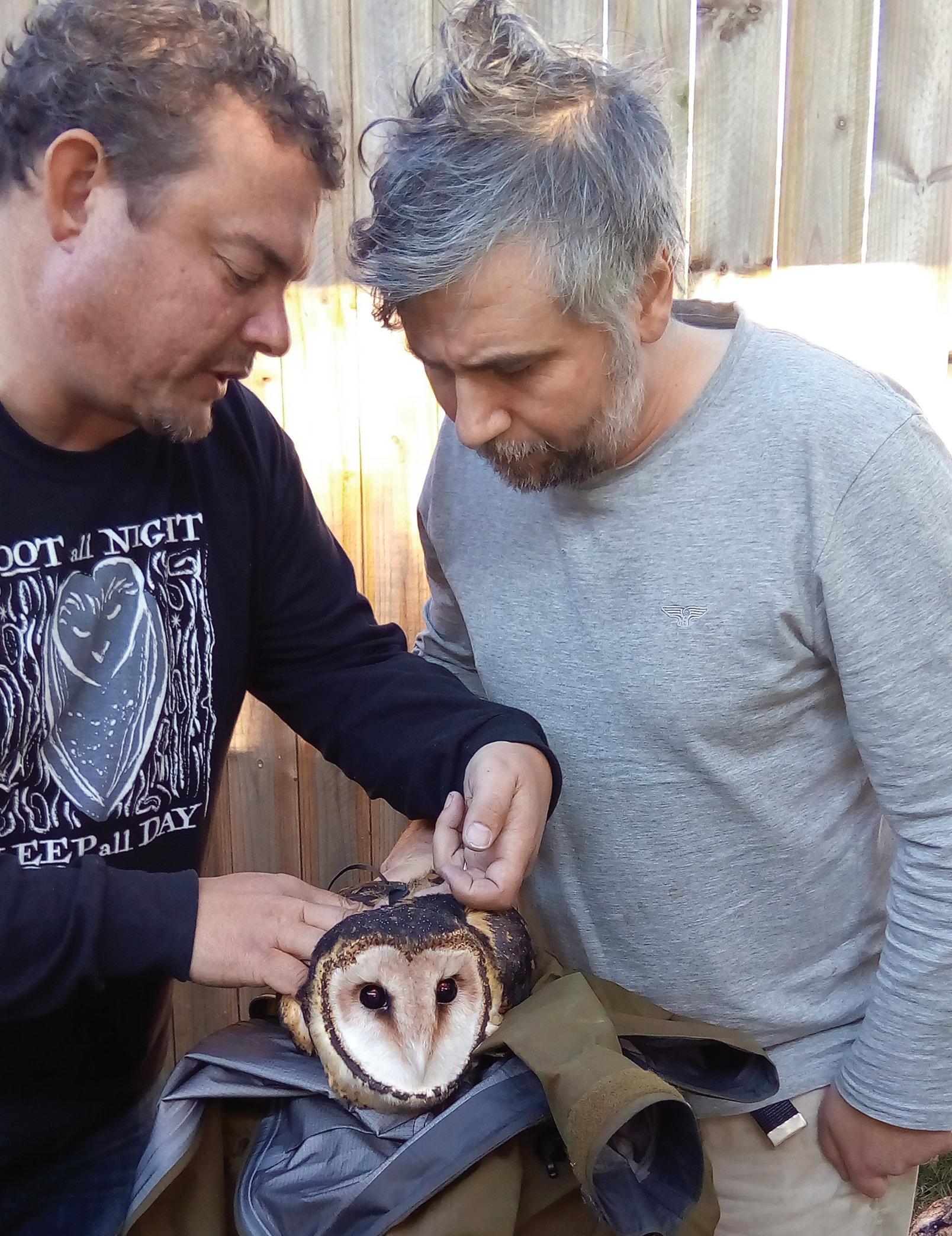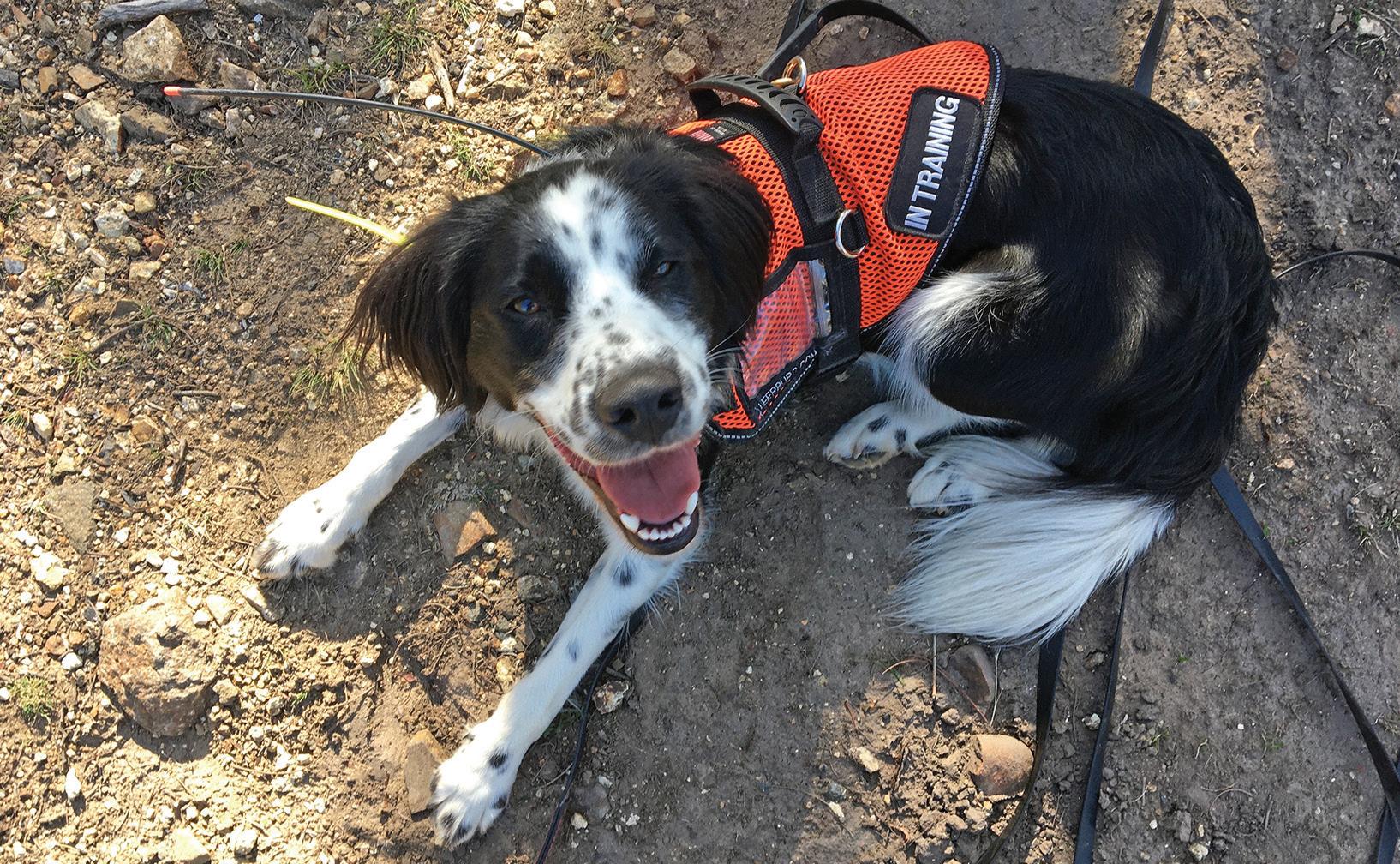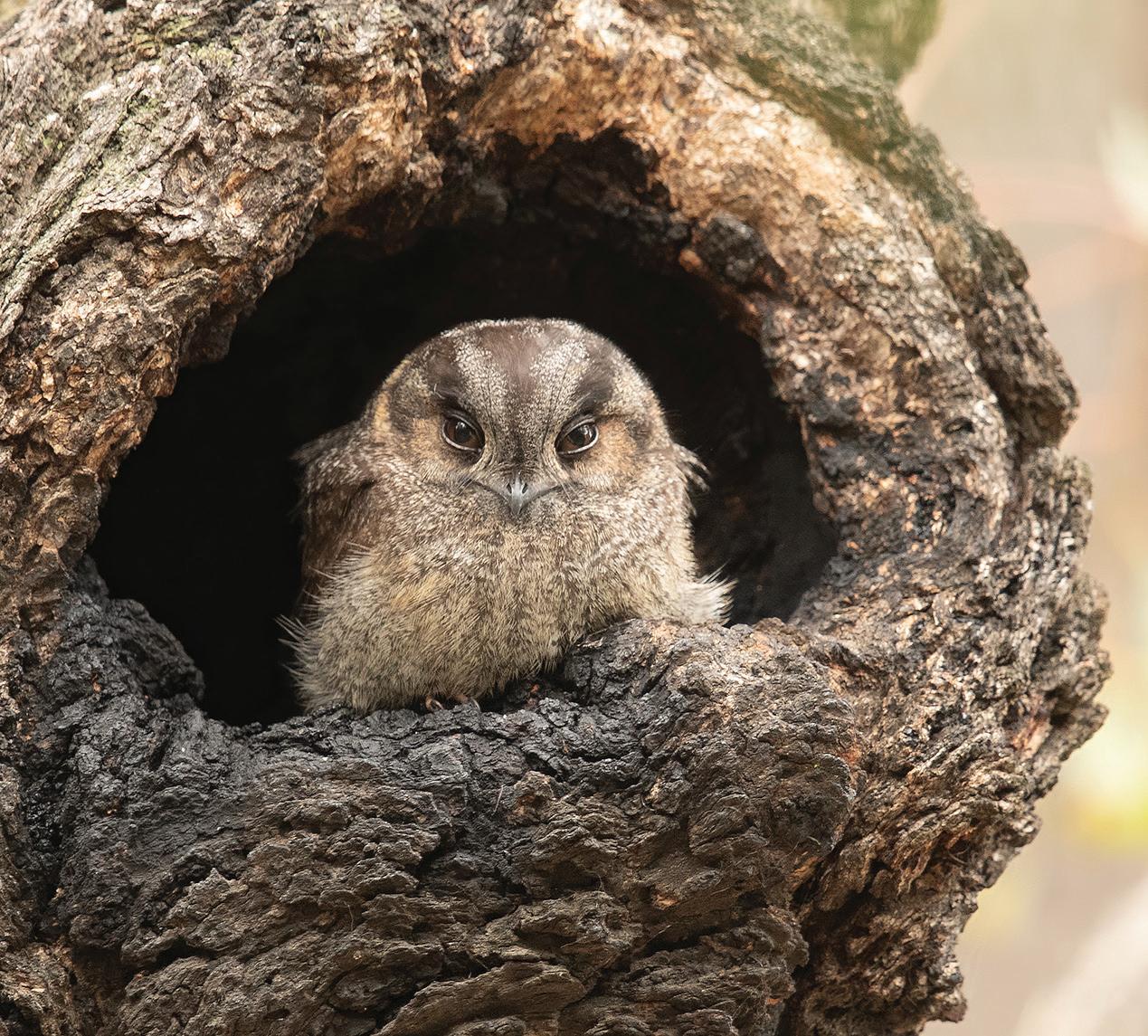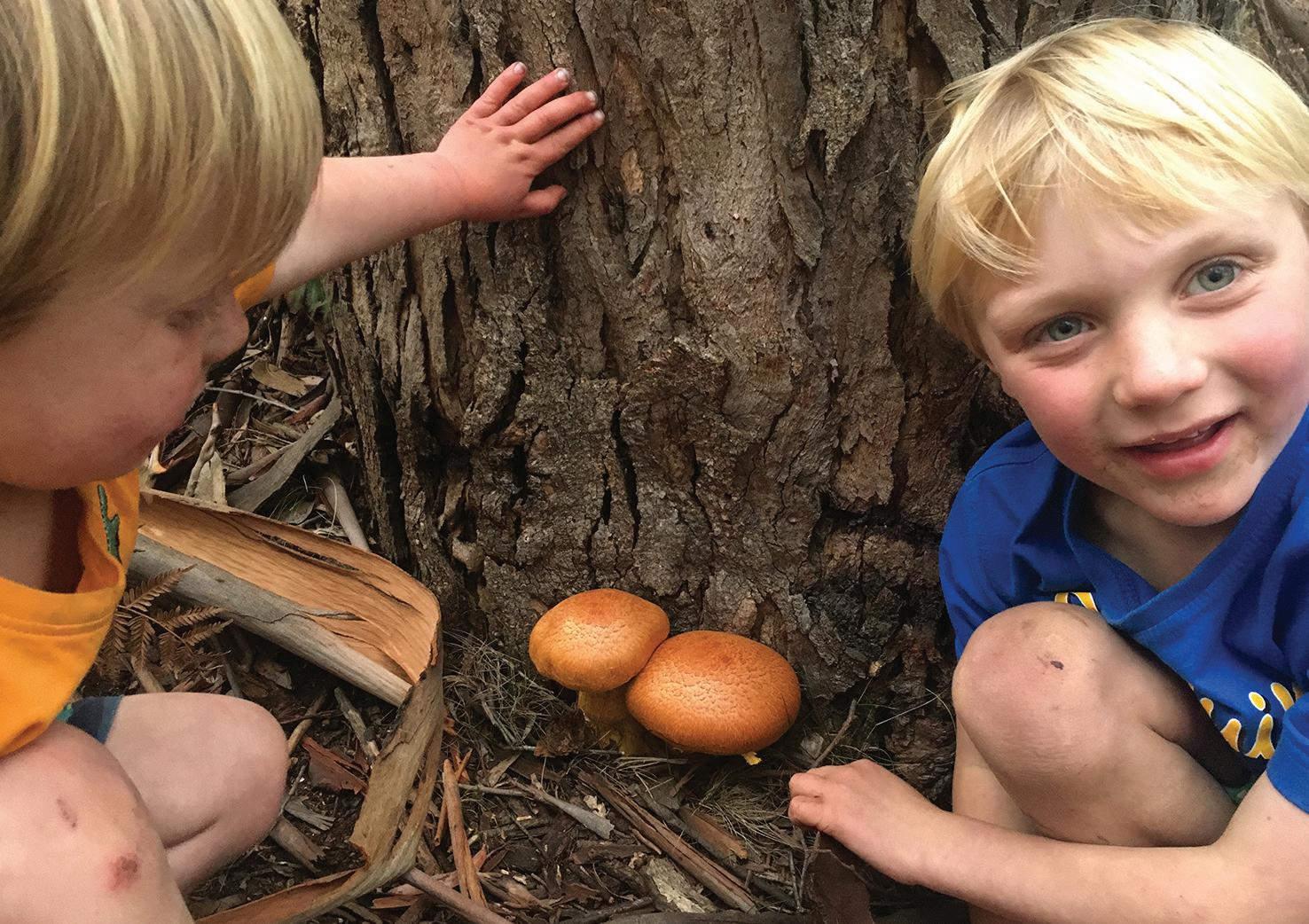
5 minute read
Who gives a hoot for Hobart’s owls?
By Nicole Gill, Team Leader Bushcare
Not all Hobart residents embrace the light. Some only make their way out at night.
Owls belong to this secret nocturnal society, flitting silently through our forests, striking fear into the hearts of small furry animals while the rest of us are snuggled up under our doonas.
Hobart is home to two true owls – the Tasmanian masked owl (Tyto novaehollandiae castanops) and the Tasmanian boobook (Ninox leucopsis).
The Tasmanian masked owl is an endangered species – there are thought to be as few as 1000 in the entire world. Rarely seen, you may sometimes hear them in the bush, cackling like kookaburras on helium, or screeching like avian banshees.
Their heart-shaped faces act as feathery satellite dishes, channelling even the faintest whisper of a bandicoot’s sneeze into their offset ears.
Masked owls eat birds and insects, but can also take quite large prey, including rabbits and pademelons. Their astonishing hearing allows them to catch moving prey even in complete darkness.
Most sightings of masked owls come from our bushland reserves – they’re known at Knocklofty, Wellington Park, Waterworks and Mount Nelson – but in 2014 an inexperienced young masked owl was seen perching in a tree out the front of the Tasmanian Museum and Art Gallery.

Boobook owls are often heard calling in Hobart.
Photo: © Eric Woehler, BirdLife Tasmania
Boobook, mo-poke or ru-ru?
The more common Tasmanian boobooks are often heard calling in Hobart – their distinctive twonote has given rise to a number of onomatopoeic common names: boo-book! mo-poke! ru-ru! morepork!
A small owl with piercing yellow eyes and mottled cream and brown plumage, boobooks prey largely on smaller creatures – mammals, birds and invertebrates – and like the masked owl, they move silently through the night on delicately fringed wings.
Scientists looking for owls in forest environments sometimes use call playback, playing owl calls through a speaker to lure them within sight, or at least hearing distance. Unfortunately, this method is often unsuccessful – the owls may be out foraging in a different area, or simply wary and unwilling to be drawn out of the darkness. It can also be intrusive – call playback can cause unnecessary stress for owls, who may believe their territory is under threat – so should only be done by qualified ecologists.
Fortunately, owl habitat can be identified another way – by locating the pellets, or castings, that owls throw up after digesting their meals.
While owls sometimes eat their prey by tearing chunks out of it, they can swallow smaller animals whole, relying on powerful enzymes in their proventriculus (first stomach bag), and the might of their gizzard (second stomach) to grind and crush their prey’s body into easily digestible mush.
Once they’ve extracted the juicy bits out of their meal, they spew up the remains in a pellet – essentially a giant, boneenhanced fur-ball. These pellets often pile up around areas of important owl habitat, like nesting hollows or roost sites. By finding piles of pellets, you can be fairly confident you’ve found an area important to owls!
Threats to Hobart’s owls
Both species of owls are obligate hollow breeders – this means they need hollows to successfully raise chicks. The old, sometimes dead or dying trees in our reserves are critically important for owls and other hollow breeders – without them, they have nowhere to raise their feathery families.
The loss of hollows at a landscape scale has been identified as one of the major threats to the Tasmanian masked owl. The City of Hobart manages its bushland reserves to protect these old trees and other areas of conservation significance.

Forest Practices Authority Raptor Specialist Jason Wiersma examines a Tasmanian masked owl with ANU PhD candidate Adam Cisterne.
Closer to home, and perhaps an even more serious threat to owls, is the use of rat poisons.
Adam Cisterne, who’s studying Tasmanian masked owls for his PhD, recently analysed the corpses of 20 owls found by members of the public. He discovered traces of rat poison in all but one of them.
Although no rat poisons are good for owls, the worst are the “single dose” poisons that kill rodents with only one feed. When owls catch and eat these poisoned rodents, they experience secondary poisoning, which can either kill them outright, or make them sick enough to impact their ability to hunt or fly successfully.
What can you do for Hobart’s owls?
Avoid using single dose rat poisons: Sometimes called second generation poisons, it’s best to avoid them if you want to help keep our owls safe. Instead use multiple dose baits, or better still, old-fashioned snap traps to catch your rats. Rats won’t hang around if they don’t have anything to eat – secure your compost bins and chook runs and you won’t need to trap so many rats.
Leave the old trees standing: Lucky enough to have an old, hollow bearing tree on your property? Consider leaving it as habitat for owls and other hollow dwellers.
Slow down at night: Boobooks in particular are vulnerable to being hit by cars when they are busy chasing insects – slow down when driving, and save them from themselves.
Seen an owl recently? Let Adam know! Adam is doing his PhD right now on Tasmanian owls, and is always keen to hear from people who’ve recently encountered these mysterious birds.
Contact Adam by emaling him at: adam.cisterne@anu.edu.au

Zorro is on a mission to uncover Tasmanian masked owl habitat, and chase balls.
A sniffer dog called Zorro
Zorro is a border collie cross springer spaniel who belongs to Bushcare team leader Nicole Gill. He’s been training since he was a puppy to sniff out Tasmanian masked owl pellets.
Like Adam and Nicole, Zorro’s a member of the ANU Difficult Birds Research Group. His mission? To uncover Tasmanian masked owl habitat, and chase as many balls as possible while doing so.
He’s already helped our bushland teams identify a boobook roost at Ridgeway – who knows what he’ll sniff out next?
When is an owl not an owl?
Owlet nightjars: Australia’s tiniest nocturnal bird, rarely spotted, and despite appearances, not an owl.
Tawny frogmouth: Masters of camouflage, often found hiding in plain sight. Also not an owl.

Owlet nightjar. Photo: JJ Harrison

Tawny frogmouth. Photo: Sylvia | Pixabay








